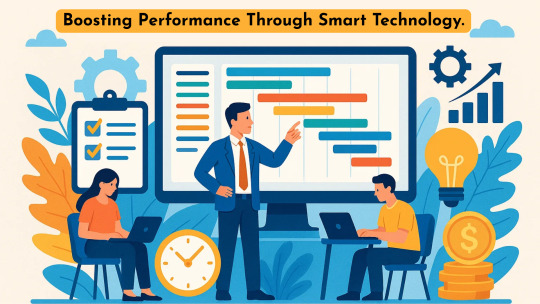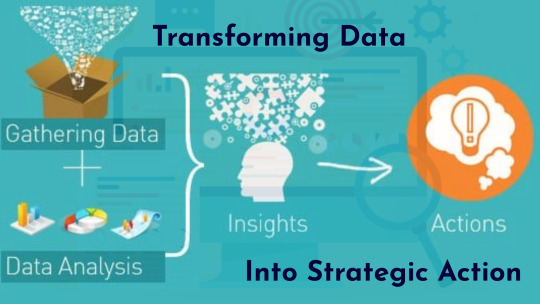Don't wanna be here? Send us removal request.
Text
Mastering Hour Calculation: Tips and Tricks

In today’s fast-paced professional landscape, the question, “How do I calculate hours?” is no longer a mere logistical concern—it’s a strategic imperative. Mastering hour calculation unlocks the door to enhanced productivity, transparent billing, and meaningful self-awareness. When you learn to calculate my hours with precision, you elevate your ability to manage time as an invaluable asset rather than a fleeting commodity. This article will illuminate essential tips and powerful tricks, along with cutting-edge software features, that together transform how you perceive and record your time.
Why Accurate Hour Calculation is important?
Before delving into techniques, it is crucial to understand why hour calculation demands intellectual rigor. Time is our most finite resource; every minute miscalculated represents lost potential and compromised outcomes. Whether you are an entrepreneur, freelancer, or employee, accuracy in time tracking reflects professionalism, fuels informed decisions, and ensures fair compensation. Furthermore, the ability to calculate hours precisely fosters a culture of accountability and clarity, empowering you to analyze productivity trends, eliminate inefficiencies, and set realistic goals. In essence, this is more than tracking—it is cultivating an enlightened approach to managing your most precious asset.

Leveraging Advanced Time Tracking Software: Features That Empower
Modern Automated time tracking software has revolutionized how we calculate hours by offering tools that are as intelligent as they are intuitive. Key features that distinguish these platforms include:
Real-Time Timer Activation: Easily start and stop timers to ensure your work sessions are recorded to the second.
Detailed Project and Task Breakdown: Organize time entries by projects, clients, and specific tasks for granular tracking and reporting.
Insightful Analytics and Reporting: Access dashboards that visualize your time distribution, helping you identify patterns and optimize workflows.
Cross-Device Synchronization: Seamlessly track hours whether you’re working from a desktop, mobile device, or tablet, ensuring no time is lost.
Custom Alerts and Budgeting: Set limits on project hours and receive notifications when you approach these thresholds to maintain budgetary control.
Integration with Productivity Tools: Connect effortlessly with platforms like project management and accounting software, streamlining your entire work process.
These features collectively empower users to shift from rough estimation to precise hour calculation, creating an environment where time truly becomes money—and insight.
Practical Tips to Master Hour Calculation

1. Begin with Clear Intentions
Before you start tracking, define what you want to measure. Are you tracking billable hours, task duration, or overall work time? Clarifying your objectives ensures that your data collection is purposeful and actionable.
2. Adopt the Habit of Consistent Logging
Consistency is paramount. Start timers the moment you begin a task and pause them during breaks or interruptions. This daily task tacker keeps your data accurate and trustworthy.
3. Break Projects Into Smaller Tasks
Dividing larger projects into smaller, manageable tasks enhances precision. When you can isolate activities, you gain clearer insights into how your time is distributed across different responsibilities.
4. Review and Reflect Regularly
Don’t just collect data—analyze it. Regularly reviewing your time reports reveals productivity trends and highlights areas for improvement. Use this reflection to adjust your workflow and refine your estimates.
5. Automate Wherever Possible
Use automation features to minimize manual entry. Automatic tracking reduces human error and ensures comprehensive coverage, especially for recurring or routine activities.
Intellectual Benefits Beyond Time Tracking

Mastering hour calculation transcends mere productivity gains. It cultivates a mindset grounded in awareness, discipline, and continuous improvement. By committing to precise tracking, you develop an acute understanding of your work rhythms, energy peaks, and distractions.
This heightened self-knowledge leads to smarter prioritization and better allocation of cognitive resources, ultimately fostering not just efficiency but fulfillment. When every hour is accounted for, your time management becomes an art as much as a science.
You can also watch this video: Emp Monitor | Boost Workplace Productivity with Employee Monitoring Software
youtube
Conclusion: Take Command of Your Time and Unlock Potential
So when you think “i want to calculate my hours” it is not simply about logging minutes—it is about reclaiming control over your life and work. By combining clear intent, disciplined habits, and sophisticated software tools, you position yourself to maximize productivity, enhance transparency, and nurture professional integrity.
Remember, the journey to effective hour calculation is ongoing. As you embed these tips and tricks into your daily routine, you will find that time, once elusive, becomes your most trusted ally. Step into this new paradigm of precision and watch your productivity—and peace of mind—soar.
0 notes
Text
How Can I Calculate My Hours Effectively?

In a world where every second is invaluable, the quest to calculate hours effectively is more than a necessity—it is a strategic imperative. Accurate time management shapes the very foundation of productivity, success, and personal balance. Without the ability to measure hours precisely, the efforts we invest can become scattered, diluted, or misdirected. The key lies in embracing a systematic, intellectual approach combined with advanced software designed to transform how we perceive and manage our time.
Why Calculating Your Hours Accurately Matters
To calculate my hours effectively means to illuminate the unseen rhythms of my daily workflow. It allows the unveiling of hidden inefficiencies and empowers me to allocate energy where it truly matters. Each hour accounted for is an opportunity seized—an insight gained into how my work harmonizes with my goals.
For freelancers, managers, and professionals alike, precise hour calculation translates directly into fairness, accountability, and financial accuracy. Erroneous tracking may lead to revenue loss or project delays, making it imperative to rely on more than just memory or rudimentary logs.
The Role of Time Tracking Software: Features and Importance

Modern solutions have transcended manual hour logs. Time tracking software is the beacon guiding us to calculate hours effectively by offering sophisticated yet user-friendly features that redefine the time management matrix.
A standout in the arena of productivity tools, boasting a rich feature set:
One-Click Time Tracking: Initiate and stop timers with a single click, ensuring effortless and precise hour recording.
Project and Task Categorization: Organize hours by client, project, or task, allowing granular visibility.
Comprehensive Reporting: Access insightful charts and reports that distill complex data into actionable intelligence.
Multi-Device Synchronization: Stay connected across desktops, mobiles, and tablets, ensuring no minute slips through the cracks.
Integrations: Seamlessly connect with tools like Asana, Trello, or QuickBooks, enhancing workflow automation.
Offline Mode: Continue tracking even without internet access, with automatic synchronization upon reconnection.
Such features converge to create a powerful environment where time is no longer just counted—it is understood, analyzed, and optimized.
How to Calculate Effectively Using Software

To truly calculate your hours effectively, adopting software like Toggl Track is just the beginning. The methodology you embrace determines your success.
Start by defining clear tracking goals. Are you measuring billable hours, task durations, or project phases? Once objectives are clear, integrate the software into your daily routine. Consistency is the bedrock of accuracy—start and stop timers precisely when tasks begin and end.
Regularly review your reports. These insights illuminate productivity patterns and reveal opportunities for optimization. For instance, noticing frequent task-switching may prompt strategies to minimize distractions, while long unproductive periods could highlight the need for breaks or workflow adjustments.
Additionally, leverage integration capabilities to synchronize your time data with invoicing or float project management systems, creating a seamless ecosystem that amplifies efficiency.
Intellectual Advantages of Precision Time Management

Beyond practical benefits, calculating your hours effectively cultivates intellectual discipline. It sharpens your awareness of how every moment contributes to your goals, fostering a mindset oriented toward continuous improvement.
Such mindful time tracking transforms you into a curator of your own productivity landscape. You develop the capacity to distinguish between urgent and important tasks, manage energy wisely, and align your daily actions with long-term visions.
This conscious engagement with time nurtures not only productivity but also professional integrity and personal fulfillment, highlighting the profound value embedded in effective hour calculation.
You can also watch this video: How To Measure Productivity Of Employee According To The Days In A Week With EmpMonitor?
youtube
Final Thoughts: Taking Control of Your Time
In conclusion, the ability to calculate your hours effectively is a cornerstone of modern productivity and success. Embracing intelligent time tracking software like Toggl Track equips you with the tools needed to transcend guesswork and inefficiency.
By weaving these technologies into your routine and cultivating consistent, mindful habits, you gain unparalleled control over your time. This mastery turns hours into strategic assets—fueling growth, enhancing performance, and empowering a balanced life.The journey to calculate my hours effectively is ongoing, but with the right approach and tools, every second becomes an opportunity for excellence
0 notes
Text
From Burnout to Balance: Is Project Resource Planning the Ultimate Solution?

Burnout is no longer a silent intruder in the workplace, it’s a widespread disruption, silently eroding productivity, morale, and innovation. With increasing pressure to meet deadlines, deliver quality outcomes, and align with dynamic goals, teams often find themselves trapped in chaotic workflows. The divide between what is expected and what is delivered continues to grow. This is where a shift towards project resource planning has emerged as a beacon of stability.
A structured approach to resource distribution isn’t merely about scheduling—it’s about restoring order, clarity, and purpose. It offers a comprehensive overview of skills, schedules, and assigned roles. When implemented effectively, it transforms a fractured process into a seamless operation.
The Root Cause of Burnout Lies in Poor Planning
Workforce exhaustion often results from uneven workloads, poorly defined roles, and misaligned priorities. Without visibility into task ownership and team capacity, employees juggle conflicting objectives, causing fatigue and disengagement. Leadership, in such scenarios, often reacts to symptoms rather than solving the underlying problem.

A well-devised planning system allows businesses to align their human capital with real-time project needs. It enables early detection of overload, bottlenecks, and inefficiencies. More importantly, it allows for a preventive, not reactive, managerial style.
Clarity Creates Confidence
When people know what they’re doing, why they’re doing it, and how their contributions affect the bigger picture, confidence and accountability naturally increase. Task transparency reduces confusion and eliminates duplicate efforts. A clearly mapped schedule lets employees manage time more effectively, promoting both efficiency and mental well-being.
Resource forecasting through intelligent tools supports realistic deadlines and reduces rushed outputs. Balanced task assignment nurtures sustained momentum and steady performance without burnout. This clarity becomes the silent catalyst behind exceptional team dynamics.
Enhancing Performance with Technology
Technology enables precision. Gone are the days when Excel sheets dictated workforce allocation. Today’s systems offer intelligent dashboards, behaviour analytics, and workload forecasting—all in real-time. Modern tools serve as operational command centers where strategy, execution, and evaluation coexist seamlessly.

Key Platforms That Reinforce This Shift
EmpMonitor stands out as a workforce intelligence platform that provides real-time employee tracking, productivity breakdowns, and application usage analytics. Its strength lies in mapping behavioural patterns alongside performance. Automated timesheets and screen activity logs, ensure that resource management decisions are data-driven and transparent. EmpMonitor excels in both in-office and remote team settings, offering flexible yet detailed oversight.
Hubstaff contributes to this ecosystem with its GPS-enabled framework, making it well-suited for mobile teams and field-based activities. It tracks time, location, and task completion metrics, allowing for accurate billing and service delivery analysis.
Desk Time focuses on simplicity and intuitive design. It’s suitable for creative and agile teams that prioritize clean time-logging and visual timeline management.
Together, these platforms showcase how digital tools revolutionize resource planning with actionable intelligence and minimal manual effort.
Turning Data into Action
One of the most profound benefits of structured resource planning lies in turning raw data into strategy. By monitoring time investment, engagement trends, and workflow pacing, leaders can adapt schedules, reallocate resources, or restructure priorities before productivity drops.

More than numbers, it’s about understanding human bandwidth. This employee wellbeing strategy leads to smarter delegation, increased autonomy, and performance-based adjustments—all essential for a healthy work environment.
Building a Culture of Preparedness
Effective planning isn’t just operational—it’s cultural. It breeds discipline, encourages ownership, and ensures employees are equipped to deliver without overstretching. With real-time insights, feedback becomes continuous rather than occasional. It also supports upskilling opportunities by revealing gaps where intervention is required.
By embedding structure into everyday functions, teams become more responsive and less reactive. The culture shifts from chaotic urgency to composed delivery.
You can also watch : How to Use Live Screen Monitoring in EmpMonitor | Step-by-Step Guide
youtube
Conclusion: The Balance Blueprint
Balance in today’s professional landscape stems not from lowered aspirations, but from strategic and refined execution. Organizations that synchronize effort with available capacity tend to achieve higher productivity and demonstrate greater resilience. With the right structural approach, maintaining equilibrium becomes both attainable and enduring.
The integration of project resource planning allows for thoughtful decision-making that respects both business goals and human limits. It’s not merely a managerial practice—it’s the framework for organizational health. For teams fatigued by inconsistency and overwhelmed by misalignment, this approach marks the transition from burnout to balance.
In a fast-paced world, the organizations that thrive will not be those that push harder, but those that plan smarter—with clarity, control, and compassion.
#resource planning#project planning#project resource management#project resource planner#project resourcing#Youtube
2 notes
·
View notes